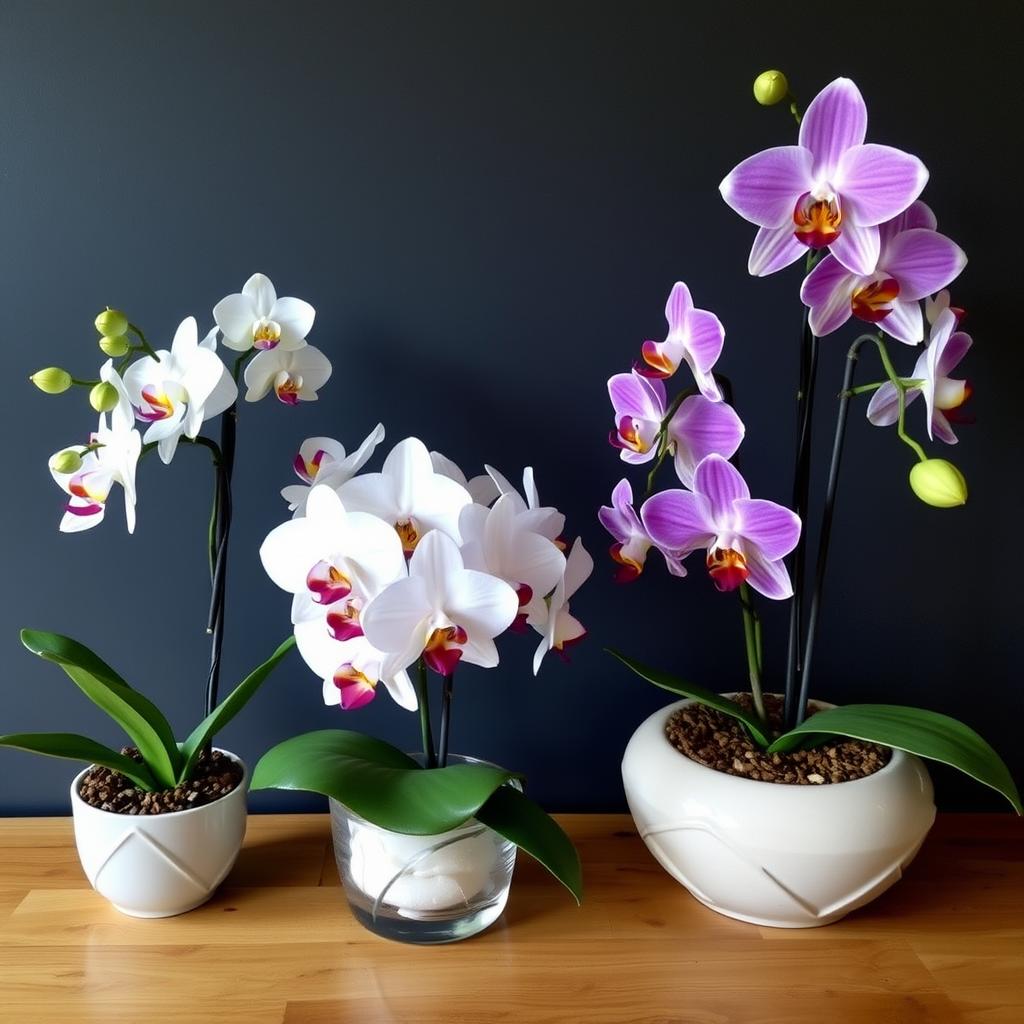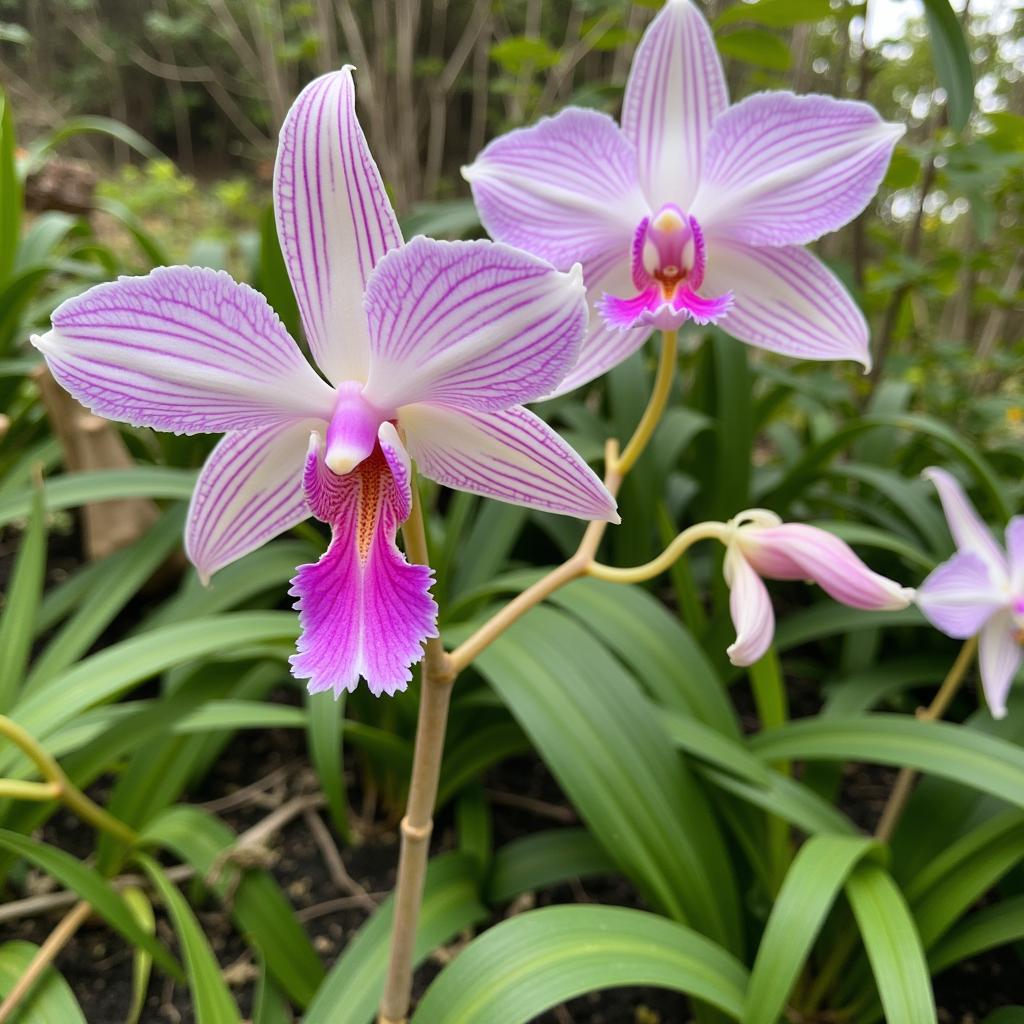
Orchids, scientifically known as Orchidaceae, represent one of the largest and most diverse families of flowering plants in the world, known for their extravagant and intricate blooms. With over 25,000 species and an estimated 100,000 hybrids, orchids can be found in almost every habitat except glaciers. This incredible variety and adaptability make them one of the most fascinating groups of flora.
Orchid boca raton florist https://vivaorchids.com
The allure of orchids dates back centuries. These exotic flowers captivated ancient civilizations; the Greeks associated them with fertility and virility, while the Chinese considered them symbols of integrity and refinement. In the Victorian era, orchid collecting became a fashionable and competitive hobby, further solidifying their status as symbols of luxury and elegance.
Beyond their aesthetic and historical significance, orchids boast fascinating biological characteristics. They exhibit a unique reproductive strategy, utilizing flowers that often mimic insects to ensure pollination. The orchid’s structure comprises three petals and three sepals, with one petal typically forming a distinctive lip, or labellum, to attract pollinators. Many species also develop intricate relationships with fungi, essential for seed germination and nutrient absorption.

Orchids’ profound adaptability and intricate beauty make them not only popular among horticulturists and floral enthusiasts but also subjects of extensive scientific research. They serve as model organisms in evolutionary biology, genetics, and ecology, revealing much about plant diversification and adaptation processes.
As one delves deeper into the world of orchids, it’s easy to see why they have captivated human imagination and botanical interest for generations. They present an exotic floral symphony that transcends simple garden beauty, embodying a complex interplay between evolution, aesthetic, and cultural significance. Orchids are more than just plants; they are a testament to nature’s extraordinary capacity for variety and wonder.
Top Orchid Species: Diversity and Distinction
Orchids are among the most diverse and widespread families of flowering plants, with over 25,000 different species. Their variety is both fascinating and extensive, encompassing a myriad of appearances and requirements. This section will focus on some of the most well-known and unique orchid species: Phalaenopsis, Cattleya, Dendrobium, and Paphiopedilum.

The Phalaenopsis, commonly known as the Moth Orchid, is a popular choice for both novice and experienced gardeners. Native to Southeast Asia, these orchids thrive in warm and humid climates. They feature broad, flat leaves and exhibit long-lasting, delicate blooms in a variety of colors, making them a visually appealing option. They typically bloom once or twice a year and require bright but indirect light and moderate watering to flourish.
Cattleya orchids are celebrated for their vibrant and often fragrant flowers. Found predominantly in Central and South America, their natural habitat ranges from lowland tropical forests to mountainous regions. Cattleyas are characterized by their large, showy blossoms and a distinct lip that often contrasts in color. They bloom once a year, usually in spring or autumn, and necessitate higher light levels and good air circulation. They are relatively easy to care for, provided their roots remain well-drained.

Dendrobium orchids are incredibly varied, with over 1,500 species. Originating primarily from the Asian tropics, their habitats include a broad spectrum from lowland forests to alpine regions. Dendrobiums are marked by their reed-like stems and vibrant flowers that can last for several weeks. These orchids can bloom multiple times a year given proper care. They require bright light, cooler night temperatures, and regular watering, though they should dry out between waterings.

Paphiopedilum, or Lady Slipper Orchid, is noted for its unique pouch-like labellum, which resembles a slipper. Native to Southeast Asia’s forest floors, they thrive in low light and cooler temperatures. Their distinct flowers come in various patterns and can bloom any time of the year. Paphiopedilums prefer a moist environment, with humidity levels that mimic their natural habitat. Consistent watering and indirect light are key for their growth.

These orchid species not only enhance the aesthetic appeal of garden spaces but also contribute to the rich ecological tapestry of their native landscapes. Their unique characteristics and varied care requirements make them a fascinating subject for horticultural enthusiasts.
Cultivation and Care: Nurturing Your Orchids
Orchid cultivation and care hinge on understanding their unique growing conditions. Orchids thrive best in environments that closely mimic their native habitats. To start, provide bright but indirect light. Most orchids prefer eastern or southern exposure; however, be cautious of direct sunlight as it can scorch the leaves. Temperature control is crucial, with optimal ranges being between 60-80°F (16-27°C) during the day and slightly cooler at night. Orchids also require a high-humidity environment, typically around 50-70%. You can maintain this by placing a humidity tray with pebbles and water underneath your plants or using a room humidifier.
Choosing the right potting media is essential for healthy orchids. Unlike traditional houseplants, orchids do not thrive in regular soil. Instead, use a well-draining mix such as bark, sphagnum moss, or a specialized orchid blend. This helps their roots to breathe and prevents rot. Watering orchids can be tricky; most species need thorough watering once a week. Allow the potting medium to dry out slightly between waterings. Overwatering is a common issue leading to root rot, so ensure your pot has excellent drainage.

Fertilization is another critical aspect of orchid care. Use a balanced, water-soluble fertilizer diluted to half strength every two weeks during the growing season. For most orchids, ‘weakly, weekly’ feeding is a good rule of thumb. Switch to a low-nitrogen fertilizer in the fall and winter months when the plant’s growth slows down.
Pest control is integral to maintaining orchid health. Regularly inspect your plants for signs of pests like aphids, scale, and spider mites. If found, treat them promptly with insecticidal soap or neem oil. Practicing good hygiene by removing dead leaves and flowers can also prevent pest infestations and diseases.
For both novice and seasoned growers, common challenges like overwatering, insufficient light, and improper fertilization can hinder orchid growth. Troubleshoot these issues with careful observation and adjustments to care routines. By providing the right conditions and diligent care, your orchids can flourish and offer captivating blooms.
Orchid Conservation: Preserving a Floral Legacy
Orchid conservation is a critical issue in preserving the biodiversity and beauty of these exceptional plants. Orchids, known for their intricate and captivating flowers, are facing severe threats in their natural habitats. Deforestation, watershed alteration, urbanization, and agricultural expansion are systematically erasing the ecosystems that orchids rely on. Such habitat destruction accounts for the most significant risk to wild orchid populations, disrupting their growth and survival.

Another serious threat is illegal collection and trade. Because of their stunning appearance and rarity, certain orchid species are highly coveted by collectors, leading to over-harvesting and population declines. Additionally, climate change is altering habitats at an unprecedented rate. Changes in temperature and precipitation patterns can severely impact orchids, which are often highly sensitive to environmental variations.

In response to these threats, numerous conservation initiatives have been established. In-situ conservation involves protecting orchids within their natural habitats. This strategy includes the establishment of protected areas, enforcement of anti-poaching laws, and habitat restoration efforts. On the other hand, ex-situ conservation focuses on protecting orchid species outside their natural environments. This is achieved through orchid propagation programs, seed banks, and tissue culture techniques, ensuring the survival of species that are endangered or nearly extinct in the wild.
Botanical gardens and orchid societies play a pivotal role in these conservation efforts. Botanical gardens offer a refuge for numerous orchid species, providing the necessary controlled conditions for their growth and reproduction. Moreover, orchid societies are instrumental in promoting awareness and fostering community involvement in orchid conservation. They organize educational programs, workshops, and field trips to connect enthusiasts with conservation activities, including responsible cultivation practices.
Individuals can also contribute to orchid conservation. By educating themselves about the origins of their orchid purchases, supporting sustainable orchid nurseries, and participating in local conservation programs, enthusiasts can help protect these magnificent plants. Through combined efforts, it is possible to preserve the legacy of orchids for future generations to admire and enjoy.





